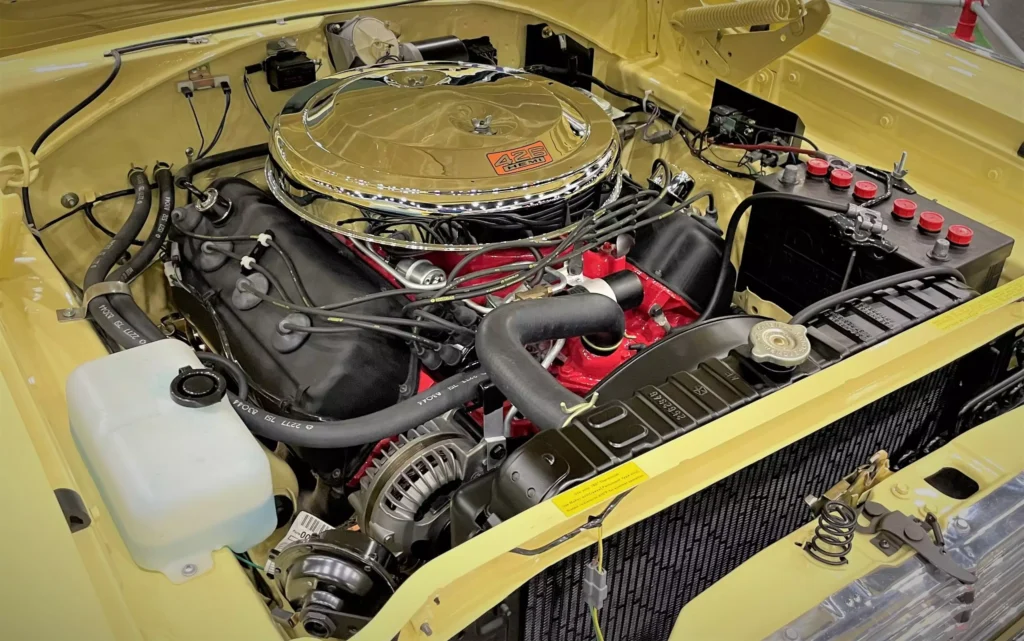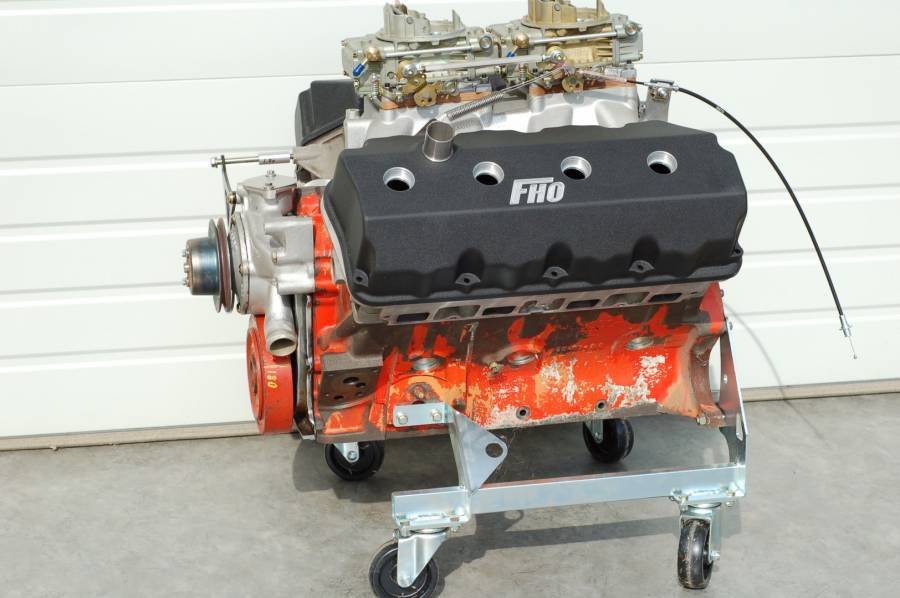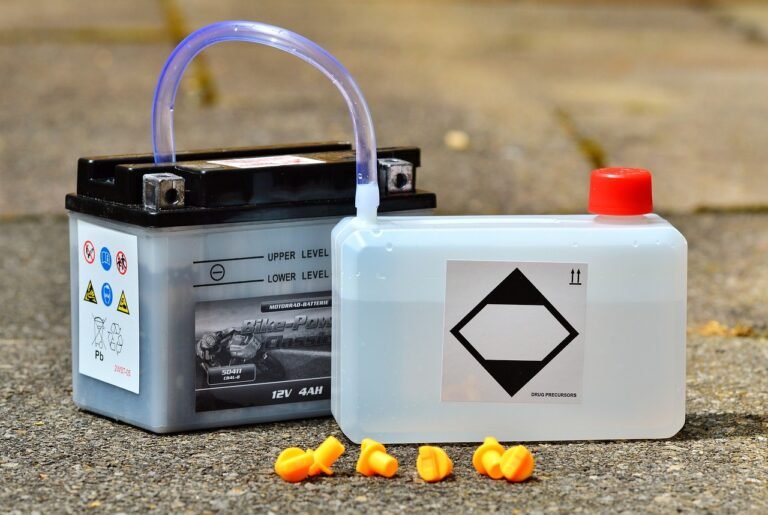
The automotive world is filled with questions that spark the imagination of enthusiasts, but one query stands out for its blend of curiosity and challenge: Can you build a 426 Hemi from a 318 block? To answer this, we need to delve into the core differences, technical possibilities, and engineering challenges. Both engines, though products of Chrysler, occupy vastly different places in the pantheon of performance.
The 426 Hemi, dubbed the “Elephant Engine,” is a symbol of brute force and innovation, while the 318 block is celebrated for its reliability and adaptability. Attempting to combine these two vastly different engines into one hybrid powerhouse is a daunting task that requires more than just mechanical skill—it demands creativity, patience, and a willingness to push boundaries.
Understanding the Basics Can you build a 426 Hemi from a 318 block
The 426 Hemi was introduced in the 1960s as a performance powerhouse, originally built for NASCAR. Its hemispherical combustion chambers allow for efficient airflow, which translates to unparalleled power output. Engines like this weren’t just about raw strength; they showcased Chrysler’s ability to revolutionise engine design.
What makes the Hemi truly unique is its ability to maintain high horsepower under extreme conditions. Popular in drag racing, it has achieved legendary status among muscle car enthusiasts. The 426 Hemi was the beating heart of iconic vehicles such as the Plymouth Barracuda and Dodge Charger, further cementing its place in automotive history.
What Is the 318 Block?
The 318 block, on the other hand, is a member of Chrysler’s LA (Light A) small-block V8 family. Introduced in 1967, it became a staple in Chrysler’s lineup, powering everything from Dodge Darts to pickup trucks. The 318 was designed for longevity and fuel efficiency rather than outright performance, but its simple design made it an excellent candidate for aftermarket modifications.
Unlike the 426 Hemi, the 318 is an everyman’s engine—affordable, easy to maintain, and widely available. However, its limitations in terms of displacement and airflow mean it can’t easily match the raw power of the Hemi.
Key Differences Between the 426 Hemi and 318 Block
Displacement and Engine Design
The 426 Hemi’s name comes from its 426 cubic inches of displacement, while the 318 block is limited to 318 cubic inches. This difference in size affects everything from the amount of fuel and air the engine can handle to the power it can produce. Additionally, the Hemi’s hemispherical combustion chambers optimise the burn of the air-fuel mixture, unlike the wedge-shaped chambers of the 318.
Performance Capabilities
The 426 Hemi was designed for one thing: performance. It produces over 425 horsepower, making it a favourite for racing and high-speed applications. In contrast, the 318 was built with everyday driving in mind, typically generating around 230 horsepower in stock form.
Cost and Accessibility
The cost difference between the two engines is significant. A 318 block can often be found for just a few hundred dollars, while a genuine 426 Hemi can cost tens of thousands, especially if it’s an original or a rare variant.
The Concept of Can you build a 426 Hemi from a 318 block
Why Would Someone Attempt This?
For many car enthusiasts, the allure of Can you build a 426 Hemi from a 318 block lies in the challenge. It’s not just about creating a powerful engine; it’s about proving that limitations can be overcome with ingenuity and persistence. Additionally, the financial appeal is strong—why spend a fortune on a genuine 426 Hemi when you can attempt to build one from a much cheaper 318?
Is It Mechanically Feasible?
Here’s the short answer: not really. The structural differences between the two engines make such a transformation incredibly challenging. For example, the 318 block lacks the physical space to accommodate the larger Hemi cylinder heads, and its smaller bore diameter restricts airflow. However, some ambitious engineers have attempted to mimic the performance of a Hemi using a 318 as the starting point.
Step-by-Step Guide: Is It Possible to Transform a 318 Block?
Examining the Block’s Limitations

Before starting, it’s crucial to understand the constraints of the 318 block. Its bore and stroke dimensions, as well as its overall structural integrity, are not designed to handle the high pressures and temperatures of a Hemi configuration.
Upgrading Essential Components
Transforming a 318 into something resembling a Hemi would require upgrading nearly every internal component. This includes the crankshaft, camshaft, pistons, and valves. Strengthening the block itself with additional reinforcements is also necessary to prevent catastrophic failure.
Fabricating Parts to Mimic a 426 Hemi
Custom machining would be required to modify the 318’s cylinder heads to approximate the airflow characteristics of a Hemi. This step is both time-consuming and expensive, often requiring professional-grade tools and expertise.
Real-World Examples of Engine Modifications
Success Stories from Auto Enthusiasts
While there are no documented cases of successfully transforming a 318 into a true 426 Hemi, there are countless examples of enthusiasts pushing the limits of small-block engines. From stroker kits to turbocharging, creativity knows no bounds in the world of engine mods.
Lessons Learned from Failed Attempts
Most failures come down to structural limitations and escalating costs. Many enthusiasts realise mid-project that the resources required far exceed the benefits, making alternative approaches more appealing.
Alternatives to Can you build a 426 Hemi from a 318 block
Purchasing a 426 Hemi Crate Engine
If you’re after the performance of a 426 Hemi, a crate engine is the simplest solution. While expensive, it offers reliability and genuine Hemi performance without the headaches of a custom build.
Exploring Other Engine Swaps
For those on a budget, swapping a 360 small block or a modern 5.7L or 6.4L Hemi into your vehicle might be a better option. These engines offer a balance of performance and cost-effectiveness.
Costs, Time, and Skills Required
Budget Breakdown
Expect to spend at least $10,000 for a serious attempt, covering parts, machining, and tools.
Timeframe for the Project
Even for experienced builders, this project can take a year or more to complete.
Skills and Tools You’ll Need
This is not a beginner-friendly project. It demands advanced knowledge of engine mechanics, access to high-quality machining equipment, and a deep understanding of performance tuning.
The Pros and Cons of This Ambitious Project
Benefits of Attempting the Build
- It’s a unique challenge that pushes your skills.
- The satisfaction of creating a one-of-a-kind engine.
Potential Drawbacks and Risks
- High costs and limited practicality.
- Significant risk of failure, both mechanically and financially.
Conclusion
The question of whether you Can you build a 426 Hemi from a 318 block is as much about imagination as it is about engineering. While the technical challenges make it impractical for most, the idea highlights the creativity and determination that define the automotive community. Whether you pursue this project or opt for more feasible alternatives, the journey is what truly matters.
FAQs About Can you build a 426 Hemi from a 318 block
- Can you make a 426 Hemi from scratch?
Yes, but it’s a labor-intensive and costly process requiring custom parts. - How does the 318 block compare to other small blocks?
It’s versatile and reliable but doesn’t match the performance potential of larger blocks like the 360. - What’s the cost of a genuine 426 Hemi?
A new crate engine can cost $15,000-$25,000, while originals can go much higher. - Can a 318 block handle the power of a Hemi?
Only with significant reinforcements, and even then, it may not be reliable. - Are there other famous engine modifications to try?
Absolutely! Stroker kits, forced induction, and modern Hemi swaps are all popular alternatives.







